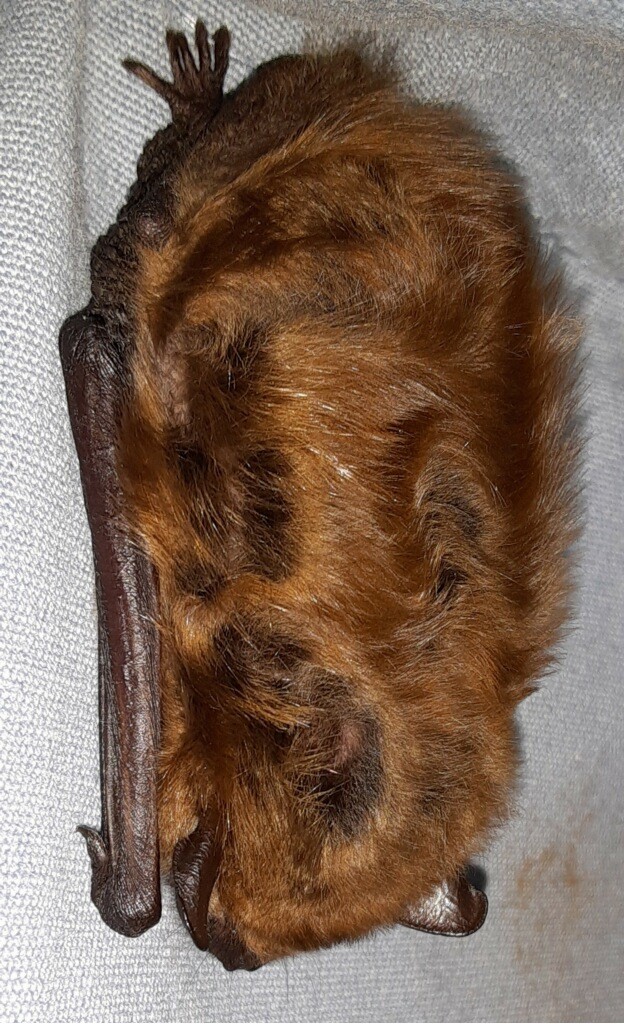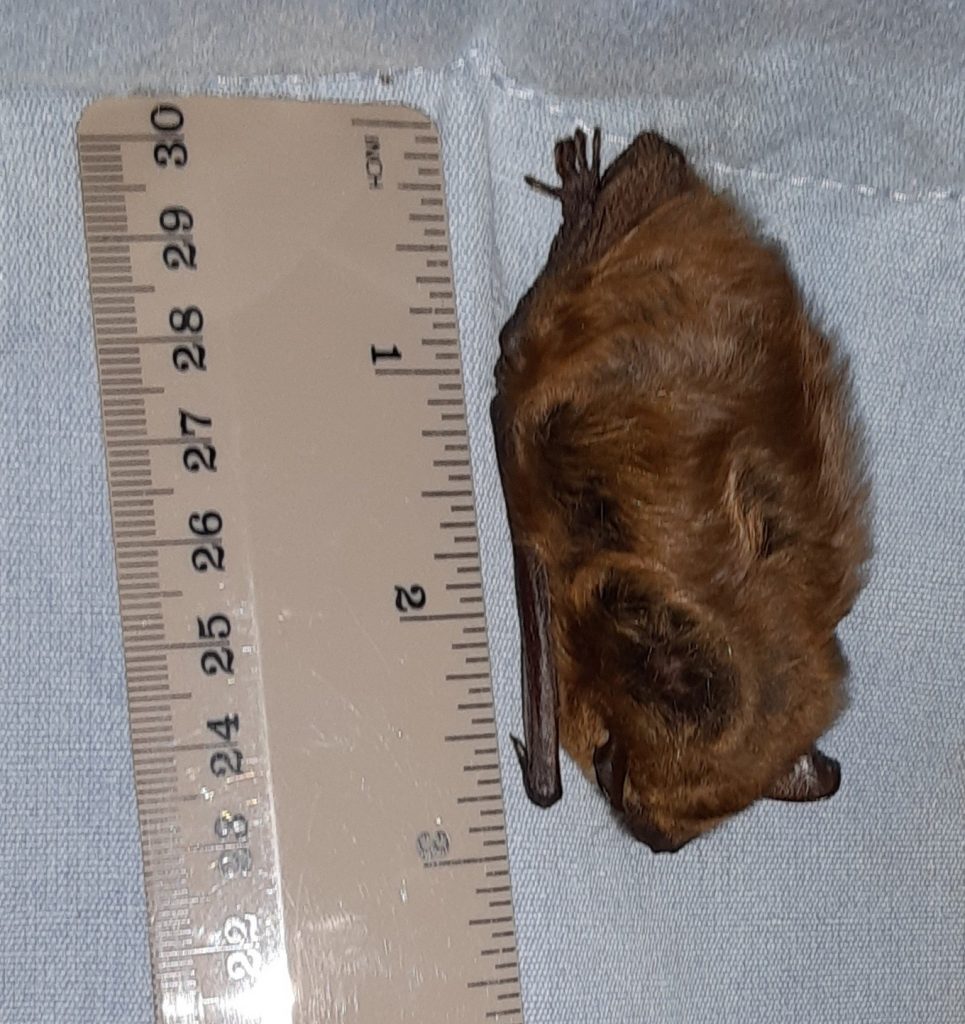By, Susan Sprout
When asked to write articles for NPC, it didn’t take me long to come up with the title “Underfoot.” My habit of looking down as I walk along is my way of exploring for what’s there – plants, ants, fungus, rocks – consistently searching out little mysteries on the ground. A wise person, my mother, kept a saying on the bulletin board next to the phone as I was growing up. The thought evidently stuck with me, as did the paper it was printed on, which is now thumb-tacked next to my desk: “Thank heaven for the happy touch of getting joy from nothing much.” That’s me, down to the ground. Pun, intended!
Which brings me to this week, when I was presented with another totally different and equally appropriate definition of “underfoot.” As I readied the upper back porch for winter, there, between the folds of the curtains was something “present and in one’s way” – a little brown bat! I certainly didn’t want to remove the curtain and dislodge it. My curiosity was aroused as to why it was there.

Here’s what I discovered: this little bat is Myotis lucifugus, Little Brown Myotis, or as its scientific name explains “mouse-eared and “light-shunning.” It certainly didn’t like the flash of my camera. I suspect it did enjoy being close to Muncy Creek in warmer weather where it could catch up to 1,200 insects in just one hour.
According to the PA. Game Commission, this microbat (3.1 to 3.7 inches) is one of the most common state-wide. I couldn’t get a look at its belly fur, but its back fur – dense, fine and glossy, pale tan to reddish to dark brown – fits the description for its species. According to one source, they can live to thirty years in the wild.

All bats have taken a big hit from White Nose Syndrome (WNS).This one was one of the first bat species documented with the disease, and one of three types of bats to lose a total of 90% of their combined populations. I was worried because it was all by itself, as little brown bats are colonial. I did find out that adult males and non-reproductive females will roost by themselves.
According to an article in Journal of Mammalogy, before WNS only 1.6% of little brown bats hibernated singly; after WNS, the percentage grew to 44.5% hibernating singly. Smart little dudes! The bat equivalent of social distancing? So that has put my worries to rest.
Needless to say, the curtains are still up and will remain that way until the little brown bat stops hanging around here!


